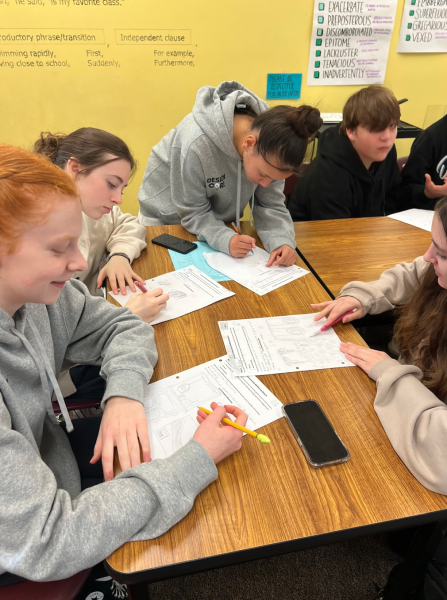College decisions weigh on seniors’ minds
April 28, 2023
After a gruesomely long waiting period for most Tualatin High School (TuHS) seniors, admissions decisions from almost every major four-year institution have been released. The burden of decision making now falls on the shoulders of newly-admitted students, shifting back and forth between the pros and cons of all of the schools into which they have been accepted.
Even though some students may have applied to a smaller number of schools than others, it is still up to the student to decide their school of choice. Despite the stress of college applications being far in the rear-view mirror for a large number of seniors, the familiar anxious feeling has crept back into students’ minds throughout the decision process with the May 1 decision deadline looming large.
Ava Spalding, senior, was accepted into six universities – all of them being in California, Nevada or Oregon.
“My top two were Northern Arizona University (NAU) and University of Nevada, Reno (UNR),” Spalding stated.
For Spalding, choosing between both institutions came down to a combination of cost, location and their options for her major of choice. This mix of high-priority characteristics for a school have undoubtedly traversed the minds of other successful applicants also considering their options. Spalding chose between her two universities by deciding which institution could best fit her needs.
“It was incredibly nice weather and the layout of their campus was awesome,” Spalding mentioned when explaining what led her to commit to UNR.
Spalding additionally listed cost-of-attendance and the university’s quality of her major as reasons for choosing UNR. After much back and forth, Spalding is relieved to finally be past the stress of choosing a college.
Similar to Spalding, TuHS senior Sarah Freedman was also considering multiple schools at one point in her college decision path.
“What led to my financial decision was distance from family, size of school, who I knew was going there and athletics,” Freedman stated.
Home was at the heart of Freedman’s decision making, especially when considering the financial strain that each university would inflict. The combined affordability of in-state tuition and proximity to home drew Freedman to the University of Oregon. Now that the stress of decision-making has been alleviated, Freedman has been able to spend her time completing tasks beyond researching colleges until early hours in the morning.
Spalding and Freedman’s stress is echoed among all college-bound seniors with the responsibility of deciding which school they wish to attend next fall. However, the relief of this pressure will finally allow seniors to coast into graduation and eventually their new schools.







